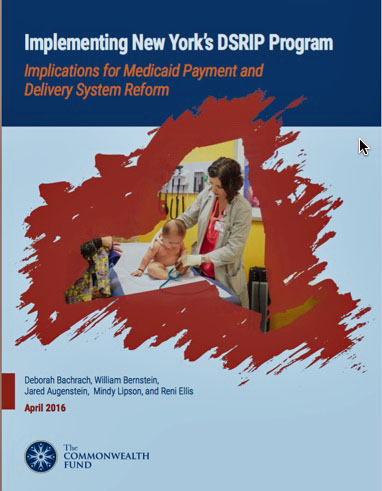As we enter the second year of the five-year, $8.25 billion Delivery System Reform Incentive Payment (DSRIP) program in New York State, it is time to take stock of lessons learned from the beginning of the process. The Commonwealth Fund’s April 2016 report, Implementing New York’s DSRIP Program: Implications for Medicaid Payment and Delivery System Reform, allows us to do just that. The report is based on findings from interviews with over 40 national and New York stakeholders, including government officials and leaders of provider institutions, healthcare organizations and health plans.
Launched in 2014, DSRIP was designed to reduce avoidable hospital use among Medicaid beneficiaries by 25%, through the reform of care delivery models and the integration of providers across different settings. To qualify for DSRIP funding, New York State required Medicaid providers and community-based organizations to form networks called Performing Provider Systems (PPS’s), of which there are 25 in New York State. Typically led by a hospital, each PPS is charged with implementing between five and eleven clinical projects aimed at enhancing health outcomes and population health through care management, disease management and integration of various clinical and community-based services. New York State has 25 PPS’s, each of which is comprised of between several hundred and over 5,000 partners. There are 11 PPS networks in New York City, three in the Hudson Valley and two on Long Island.
The Commonwealth Fund highlights early observations and lessons learned in five areas:
- Organization
- Governance and market transformation
- Care model and social determinants of health
- Data-sharing and analytics
- Measurement and accountability
- Value-based payments
In terms of governance and market transformation, stakeholders attest that DSRIP has served as a change agent for Medicaid providers, with some describing the program as a “down payment on transformation.” DSRIP is stimulating the integration of services that have traditionally been separated into silos. It is also spurring investment in high-need populations, IT and analytics infrastructure, and care management, all of which are necessary for improving the delivery of healthcare services.
The report contends that the long-term role of the PPS’s is uncertain, describing them as “transitional vehicles that may give rise to other entities, such as clinically integrated networks or accountable care organizations (ACOs).” Provider networks that emerge post-DSRIP are likely to be determined by marketplace trends such as the mergers and acquisitions activity that has been prevalent of late in New York. The report predicts that some reluctant provider relationships within PPS networks, which it likens to “forced marriages,” will eventually dissolve without the fostering of trust and identification of shared interests and goals, and that “new, more tightly integrated structures” are likely to develop as the market matures.
In its conclusion, the Commonwealth Fund report characterizes the DSRIP implementation process as somewhat convoluted and open to interpretation, noting: “Given the enormity and complexity of this effort, it is hardly surprising that it is a messy process and there is a diversity of perspectives on what is and is not working, as well as what requires re-envisioning.”
Learn more
Visit our DSRIP page for answers to common questions about DSRIP, resources to help you achieve success under DSRIP, and links to New York State web pages with more information.
